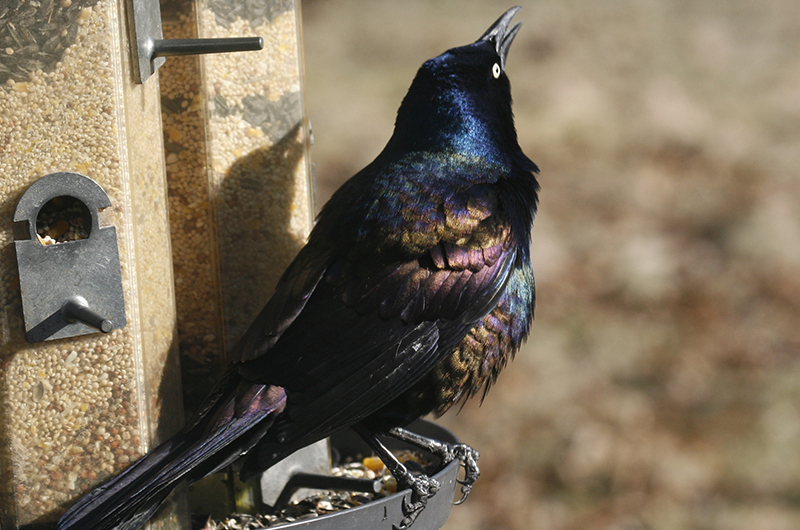One of the major signs of spring took place on March 1 when Albert Fischer found one tree swallow over Squibnocket pond near the beach parking lot. He also found a killdeer and a Wilson’s snipe there. It is hard to say whether the latter two species were new arrivals or overwintering individuals. Then he spotted the second tree swallow of the season at Bliss Pond on March 7.
Also notable is the presence of two short-eared owls near the right fork at Katama on March 8, spotted by Bob Shriber. Fifty years ago this species was a common breeder, and it would not have been unusual to see five to 10 of them in the air at one time. Now they are rare throughout New England, as they only nest on Nantucket, Tuckernuck and maybe Muskeget.
Mr. Fischer has also had a flock of grackles and red-winged blackbirds show up at his feeders. Other sightings of grackles are from Carol Goldstein on March 6 and Morgan Hodgson on the same day.
A Red-breasted nuthatch was observed by Laurie Meyst on March 5. Was it a migrant or an overwintering bird? We found five of them on the Jan. 4 Christmas Bird Count, so I was thinking wintering, but then one appeared at my feeder on March 9 — a first for the winter. These two sightings together may suggest that these birds are migrants.
On March 8, Scotty Goldin observed something he did not expect to see — a great blue heron foraging in the fields at the southeast corner of the Katama Airpark. What was it doing there? Well, they occasionally forage in upland meadows where they catch small mammals that are scurrying about. One of the interesting aspects of birding is to find a common species in an unexpected location.
John Zannini and Jenifer Strachan spotted a belted kingfisher at Long Point on March 7.
A Cooper’s hawk buzzed Paul Bailey’s feeders on March 5. Such attacks are more common than we think. After all, this species makes it living by catching birds. Look for one perching nearby when all the birds at your feeder suddenly disappear.
Jim Suozzo did some birding on the last two days of February. The highlights from his yard were pine warbler, yellow-rumped warbler and yellow-bellied sapsucker. On Feb, 29, he found black scoters, harlequin ducks, great cormorants, surf scoters, and one Horned Grebe.
Birder’s Meeting Report
Every year MassAudubon organizes a birders meeting where we get together to learn about research and conservation of birds. Luanne Johnson and I attended this year’s meeting on March 8, and a lot of the conversations focused on the fact that bird populations have declined about 29 percent since 1970 – a decline of almost three billion (yes, billion) birds. The science behind that number confirms what most long-time birders have noted.
One of the most interesting talks focused on the chimney swift, a species that will return to our shores in another six weeks or so. They are one of the many species that have declined by 50 per cent since 1970. Believe it or not, it is only recently that their wintering grounds were discovered. Although we knew they wintered in South America, there had been very few sightings during our winter.
Technology now allows us to analyze feathers to see what the birds were eating when they were molting and growing new feathers. Such an analysis showed that chimney swifts are eating bugs that live in the rainforest canopy. They are so high above the ground and the vegetation is so thick that we ground-based birders cannot even see them. The first north-bound migrants are here with more on their way!
Please report your sightings to birds@mvgazette.com.
Robert Culbert is an ecological consultant with Nature Watch LLC living in Vineyard Haven.









Comments
Comment policy »